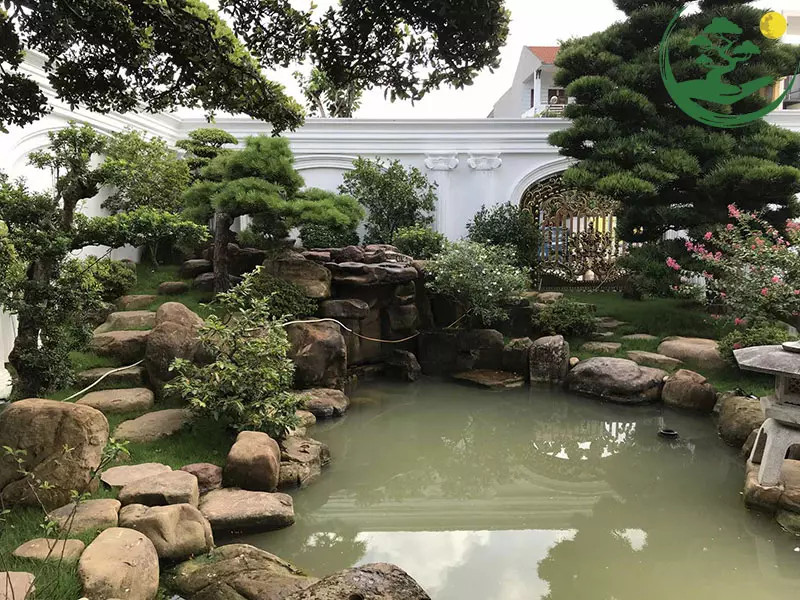
Nguyen Ky in Ba Vi, Hanoi, has completed the construction of a Japanese-style garden on a land plot he bought three years ago.
Ky said it requires a lot of time and money. He has spent VND1 billion on the garden. Before setting to design and build the garden, Ky travelled to many places to look at existing garden models. He also learned about Japanese architecture and culture.
To have a satisfactory design, Ky hired three designers who designed the garden based on his idea. Each design cost VND5 million. Finally, he chose only one.
There are many styles for Japanese gardens and each is based on real natural scenes in Japan. “After you decide to follow a certain style, you need to learn carefully about it, or you will deviate from the style and make the world laugh,” Ky said.
Asked about the cost, Vu Xuan Hong in Nhu Quynh, Hung Yen, the owner of a 1,600 sq m garden said the garden, built last year, cost more than VND1 billion. The money was spent on trees, Koi fishes, a lake and other items.
Hong said the deeper the knowledge about Japanese style one has, the more money one has to pay for the hobby. Garden owners have to understand Japanese culture and show characteristics of Japanese culture in their gardens. They must buy materials with Japanese standards.
Japanese gardens is now a growing trend in Vietnam. Precious Japanese trees and special materials are imported to Vietnam to provide to the wealthy who want to build the gardens.
The fee for Japanese-style garden construction is VND200,000 per sq m on average. However, the fee may be several times higher, depending on the complexity of the design.
The pond for Koi fish costs about VND100 million, which includes the construction fee of VND3 million per sq m, a water pump, water filtration and aeration.
Meanwhile, one of the most expensive items for a garden are pine trees, each of which costs nearly VND100 million. There should be at least 2-3 trees in a 1,000 sq m garden.
Garden owners also have to spend money on grass cover, around VND100,000 per sq m, decorative stones costing VND3-5 million per cubic meter, a lighting system, and stone statues.
“You need to spend VND1 billion or so on a garden covering an area of 1,000 sq m,” Hong said.
There are many styles for a Japanese garden, but Tsukiyama, ChaNiwa and Karesansui (Zen Garden) are the three most popular styles in Vietnam. The construction cost of Tsukiyama garden is very high.
The owners of ChaNiwa and Karesansui gardens don’t need to have large gardens. Just small corners of gardens are enough for owners to design satisfactory gardens, with reasonable costs.
According to Huy, a designer of Japanese gardens, most people choose the Tsukiyama style, which has trees, fish ponds and artificial mountains. However, this style is chosen mostly by the wealthy because of complicated execution and big money. The trees in the Tsukiyama garden are very expensive.
For ChaNiwa style, there is an entrance to the Japanese tea ceremony area with stone steps and benches that allow people to stop for a short while before entering the major tea ceremony area. There is a small gate and stone lights at the entrance and a Koi fish pond inside the area.
Meanwhile, a Zen Garden is a unique type of garden not using ponds or springs. The natural beauty of this style lies in the arrangement of stones, gravel, white sand, moss and trees. The arrangement and placement of stones is extremely important.
Truong, a designer of Japanese gardens with five years’ experience, said more and more people want to have Japanese gardens, not only people willing to spend up to tens of billions dong, but ones who have only 150 sq m of land. The cost varies, but it requires at least hundreds of million dong.
Ngoc Cuong